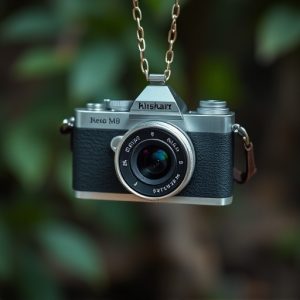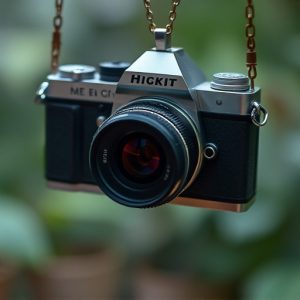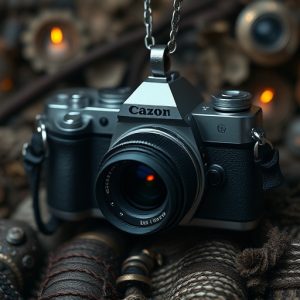Hidden Necklace Cameras: Unveiling Discreet Technology and Its Implications
Hidden necklace cameras offer discreet, high-quality video and photo recording, blending fashion wit…….
Hidden necklace cameras offer discreet, high-quality video and photo recording, blending fashion with functionality. Their compact design allows for easy wearability as elegant jewelry while providing extended battery life and remote control via smartphone apps. Ideal for personal security and professional surveillance, these devices raise ethical and legal considerations regarding privacy invasion in public and private settings, demanding a nuanced approach to their use.
Uncover the intriguing world of hidden necklace cameras, a discreet technology that has sparked curiosity and debate. These miniature spy devices, seamlessly integrated into elegant jewelry, offer a unique perspective by capturing unseen moments. From personal security to professional surveillance, their applications are vast. However, alongside benefits like discretion and portability, challenges and legal complexities arise, demanding careful consideration. Explore the ins and outs of these innovative yet controversial gadgets.
Understanding Hidden Camera Necklaces: A Discreet Technology
Hidden necklace cameras, also known as spy necklaces, are a discreet and innovative technology designed to capture video or still images without drawing attention. These tiny camera devices are seamlessly integrated into elegant necklaces, making them virtually invisible to the naked eye. The concept is simple yet ingenious—a stylish accessory that doubles as a covert surveillance tool. Crafted with precision, these cameras often resemble high-end jewelry, allowing wearers to capture moments while maintaining an air of sophistication.
The technology behind hidden necklace cameras has advanced significantly, offering improved image and video quality, extended battery life, and enhanced storage capabilities. They are powered by small rechargeable batteries, ensuring prolonged use without raising suspicion. These cameras can be remotely controlled via a smartphone app, allowing users to start, stop, and review recordings secretly. This discreet technology is particularly appealing for individuals seeking a covert recording solution for personal or professional use, adding an element of surprise and secrecy to their surveillance efforts.
Applications and Use Cases for Spy Necklace Cameras
Spy necklace cameras, also known as hidden necklace cameras, offer a unique blend of discreteness and technological sophistication. Their primary application lies in personal security and surveillance, allowing users to capture evidence discreetly in various settings. These compact devices can be worn as elegant necklaces, seamlessly integrating into everyday attire without drawing attention. This makes them ideal for individuals seeking to monitor their surroundings, whether at events, meetings, or during travel.
In addition to personal use, hidden necklace cameras find utility in professional and investigative contexts. They can serve as valuable tools for journalists, researchers, or investigators needing to record conversations or gather evidence covertly. The ability to capture high-quality video and audio discreetly opens doors for fact-finding missions, undercover operations, and even legal cases where visual proof is essential. With their compact size and easy operation, these cameras provide a versatile solution for those requiring a reliable and unseen recording device.
Advantages and Challenges of Wearing a Hidden Camera Necklace
Wearing a hidden camera necklace offers several advantages for those seeking discreet surveillance or personal security. These miniature cameras, designed to look like everyday jewelry, allow users to capture high-quality videos and photos without drawing attention. Whether for professional purposes, such as documenting evidence in hazardous environments, or for personal safety, like monitoring suspicious activities, these devices provide an invisible and portable solution. Their compact size means they can be easily worn around the neck, making them less obtrusive than larger cameras. This feature makes hidden necklace cameras particularly appealing to individuals who need to blend into their surroundings while recording.
However, there are also challenges associated with this technology. The primary concern is privacy and ethical considerations. Wearing a camera that records without explicit consent can raise serious ethical red flags, especially in public spaces. Additionally, the small size of these devices might lead to misusage or accidental activation, causing potential legal issues. Another challenge is ensuring reliable functionality; because they are worn closely to the body, these cameras may be more susceptible to damage or interference from clothing or physical activities. Moreover, data storage and transmission can pose security risks if not managed properly, as personal footage could fall into the wrong hands.
Legal and Ethical Considerations: Navigating the Grey Areas
The rise in popularity of spy necklace cameras, or hidden necklace cameras, has sparked a fascinating yet complex debate regarding legal and ethical boundaries. These miniature devices, seamlessly integrated into wearable accessories, offer unprecedented opportunities for surveillance and personal security. However, their use raises significant concerns about privacy invasion and the potential for abuse. The grey area lies in understanding where and how these cameras can be legally employed without crossing ethical lines.
In many jurisdictions, the legal status of hidden cameras is subject to strict regulations. Public spaces generally require explicit consent for recording, with exceptions for certain professions like law enforcement. Wearing a spy necklace camera in public could be considered a breach of privacy rights unless the individual being recorded is aware and gives permission. Ethical considerations also extend to the context in which these devices are used; for instance, using them for covert surveillance in private residences or workplaces may be seen as an unethical intrusion into personal space and autonomy.


